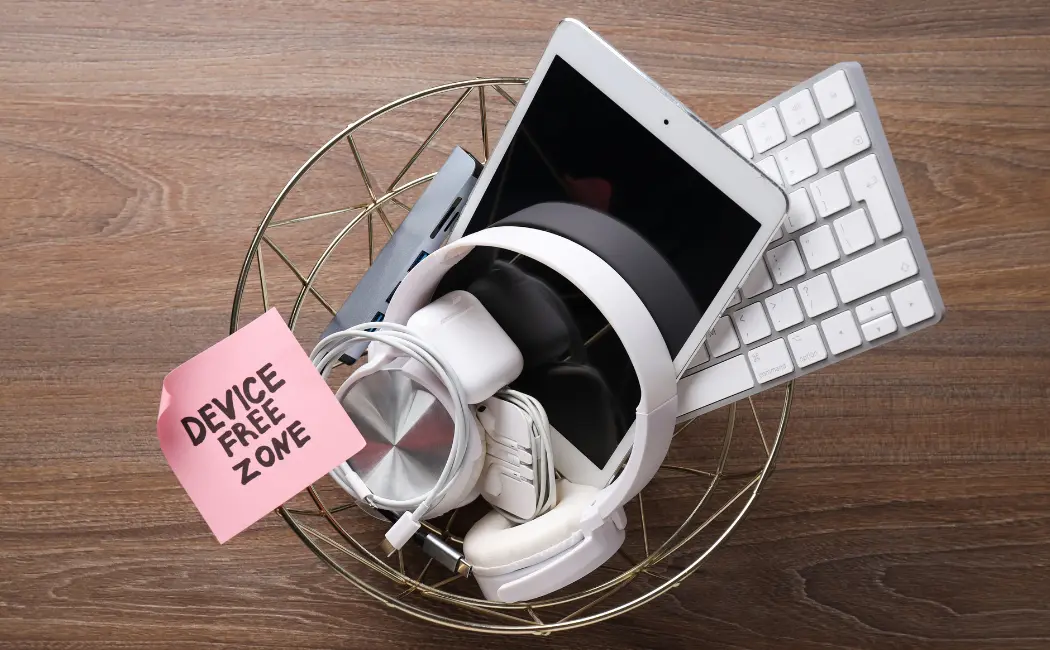In today’s digital age, technology has become an integral part of our daily lives.
We wake up to the sound of our smartphones, spend hours scrolling through social media, and drift off to sleep with our devices by our side.
However, this constant connectivity comes at a cost.
Digital overload can lead to mental fatigue, decreased productivity, and a diminished sense of well-being.
Digital detox, a deliberate break from digital technology, offers a solution to this problem.
By temporarily disconnecting from the digital world, individuals can recharge, refocus, and rediscover the joys of analog living.
You May Also Like: Why Eating Seasonal Fruits Matters for Your Health and Environment
The Risks of Digital Overload
- Mental Health: Excessive screen time has been linked to increased stress, anxiety, and depression.
- Sleep Disturbances: Exposure to screens before bed disrupts sleep patterns.
- Social Isolation: Digital communication can replace face-to-face interactions.
- Decreased Productivity: Constant notifications and distractions reduce focus.
- Physical Health: Sedentary behavior contributes to obesity, diabetes, and cardiovascular disease.
Benefits of Digital Detox
- Improved Mental Clarity: Reduced digital stimulation enhances focus and concentration.
- Enhanced Creativity: Detoxing from digital media fosters imagination and innovation.
- Better Sleep: Disconnecting before bed promotes deeper, more restful sleep.
- Increased Productivity: Without digital distractions, tasks are completed efficiently.
- Stronger Social Connections: Face-to-face interactions deepen relationships.
Types of Digital Detox
- Complete Detox: Abstain from all digital devices for a set period.
- Partial Detox: Limit specific technologies, such as social media or email.
- Digital-Free Zones: Designate device-free areas, like bedrooms or dining tables.
- Digital-Free Times: Establish device-free periods, like during meals or exercise.
Preparing for a Digital Detox
- Set Clear Goals: Define the purpose and duration of your detox.
- Plan Alternative Activities: Engage in hobbies, exercise, or reading.
- Notify Others: Inform friends, family, and colleagues of your detox plans.
- Find Support: Join a digital detox community or enlist a buddy.
Overcoming Challenges
- Withdrawal Symptoms: Expect and manage anxiety, boredom, or frustration.
- Social Pressure: Resist the urge to check devices due to peer pressure.
- Urgent Needs: Establish protocols for emergencies or essential communication.
Digital Detox Retreats and Resources
- Digital Detox Retreats: Organizations offering guided detox experiences.
- Apps: Tools like Freedom, SelfControl, or Moment track and limit device use.
- Books: “The Digital Diet” by Daniel Sieberg, “Reset” by Nick Bilton.
Conclusion
Digital detox offers a refreshing respite from the demands of our digitally dominated lives.
By disconnecting from technology, we can:
- Reclaim our time and attention.
- Revitalize our mental and physical well-being.
- Rediscover the joys of analog living.
Embracing digital detox as a regular practice can lead to a healthier, more balanced relationship with technology.
References:
- “The Digital Detox” by Christina DesMarais
- “Reset: How This Crisis Can Restore Our Values and Renew America” by Nick Bilton
- “The Psychology of Social Media” by Ciarán McMahón
- “Digital Detox: A Guide to Disconnecting” by Digital Detox Org
- “The Benefits of Digital Detox” by Harvard Business Review
Additional Resources:
- Digital Detox Org: A comprehensive guide to digital detox.
- Digital Detox Retreats: Listings of retreats and programs.
- (link unavailable) Mindfulness and meditation resources.
- The Digital Diet: A framework for healthy digital habits.
- Reset: A documentary exploring digital addiction.

